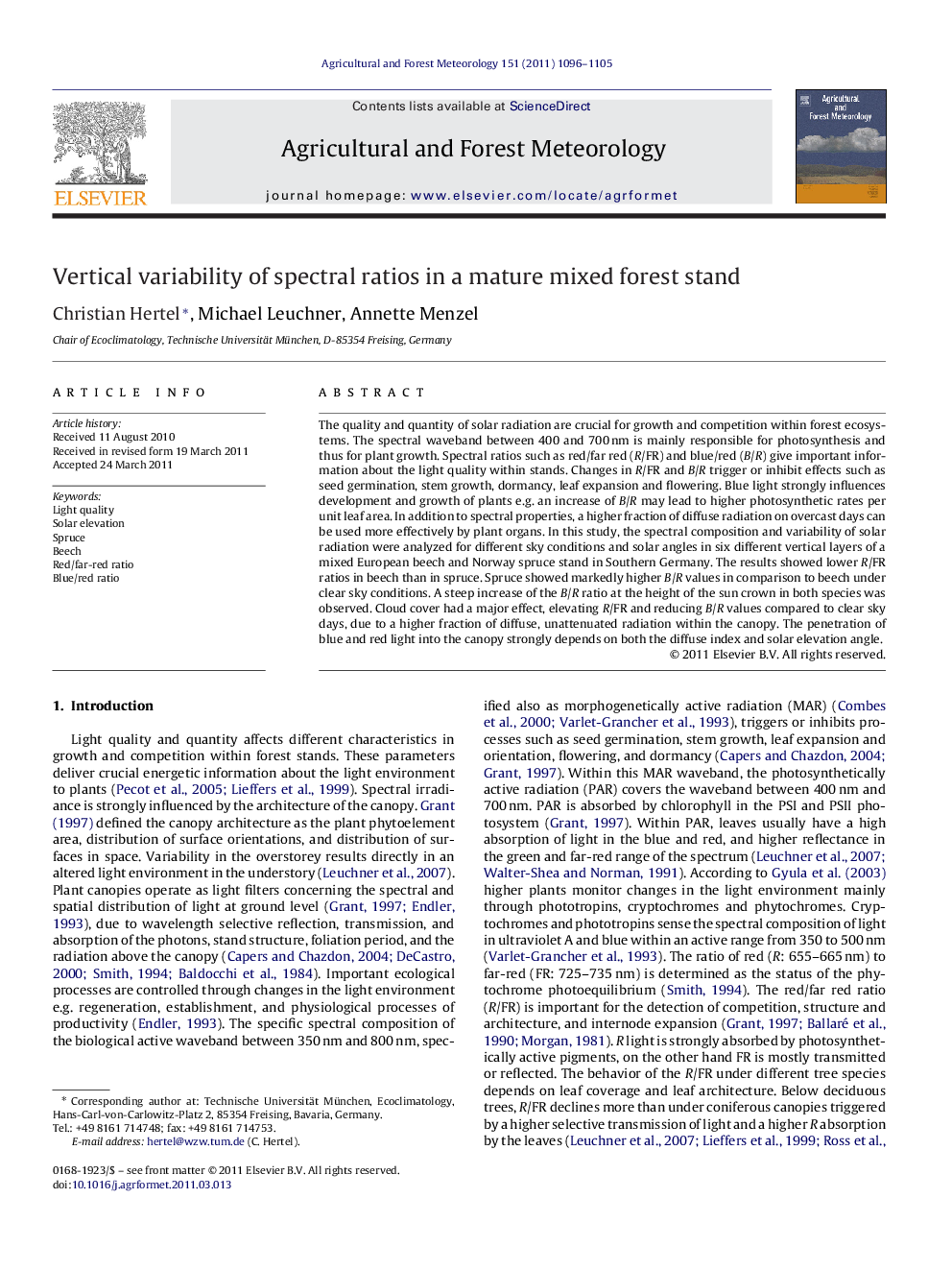| Article ID | Journal | Published Year | Pages | File Type |
|---|---|---|---|---|
| 82122 | Agricultural and Forest Meteorology | 2011 | 10 Pages |
The quality and quantity of solar radiation are crucial for growth and competition within forest ecosystems. The spectral waveband between 400 and 700 nm is mainly responsible for photosynthesis and thus for plant growth. Spectral ratios such as red/far red (R/FR) and blue/red (B/R) give important information about the light quality within stands. Changes in R/FR and B/R trigger or inhibit effects such as seed germination, stem growth, dormancy, leaf expansion and flowering. Blue light strongly influences development and growth of plants e.g. an increase of B/R may lead to higher photosynthetic rates per unit leaf area. In addition to spectral properties, a higher fraction of diffuse radiation on overcast days can be used more effectively by plant organs. In this study, the spectral composition and variability of solar radiation were analyzed for different sky conditions and solar angles in six different vertical layers of a mixed European beech and Norway spruce stand in Southern Germany. The results showed lower R/FR ratios in beech than in spruce. Spruce showed markedly higher B/R values in comparison to beech under clear sky conditions. A steep increase of the B/R ratio at the height of the sun crown in both species was observed. Cloud cover had a major effect, elevating R/FR and reducing B/R values compared to clear sky days, due to a higher fraction of diffuse, unattenuated radiation within the canopy. The penetration of blue and red light into the canopy strongly depends on both the diffuse index and solar elevation angle.
► Spectral ratios: red/far red (R/FR) and blue/red (B/R). ► Analysis highlights the behaviour of R/FR and B/R under different sky conditions and species. ► 130 sensor multichannel spectrometer, covering the range of 360–1020 nm with a total measuring cycle of 2 min 15 s. ► Cloud cover has a major effect, elevating R/FR and reducing B/R values compared to clear sky days. ► Steep increase of the B/R ratio at the height of the sun crown in both species can be observed.
